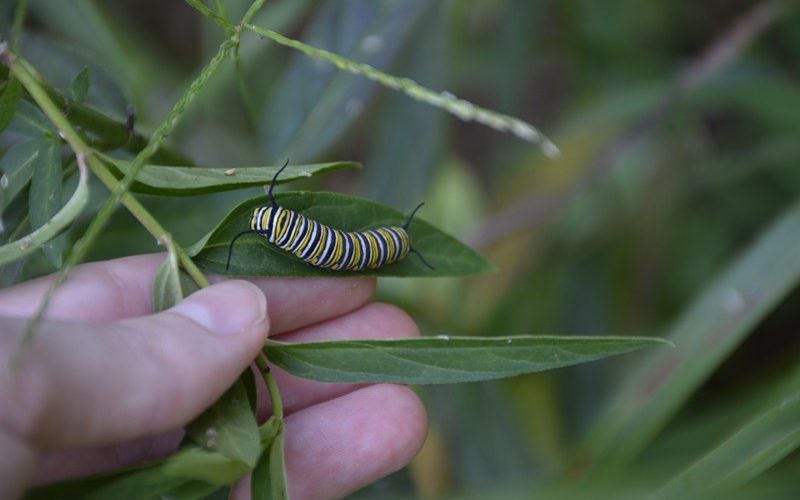Caring for Monarchs’ favorite plant
AMANDA BANCROFT
Making Ripples
Many of us know about the importance of planting or preserving milkweed for Monarch butterflies, who rely on it as their only host plant to reproduce. But it won’t do us or the monarchs much good if the milkweed plants die or become diseased. Sometimes it’s difficult to find certain varieties of the plant for sale, or successfully grow milkweed from seed. It’s even less intuitive how to care for various kinds of milkweed (which have different requirements) once the plants are acquired. Luckily there are resources online and knowledgeable botanists and naturalists in Northwest Arkansas who regularly help folks keep their milkweed healthy.
Swamp milkweed (Asclepias incarnata) typically has rosy pink or purple blossoms and tolerates “wet feet,” a cute way of saying that, like its name implies, it evolved in swampy waterlogged conditions and likes moist soil. Butterfly milkweed (Asclepias tuberosa) usually has yellow-orange or reddish blossoms and likes dry to medium wet soils. Common milkweed (Asclepias syriaca) has pink blossoms and likes it dry. For more details, ask the nursery or plant seller for care instructions about your particular variety of milkweed.
Oleander aphids, introduced from the Mediterranean region, can cover a swamp milkweed plant by the dozens so that the leaves and stems look like they’re made of tiny orange Tic Tac mints! They’re easy to remove, just squish them between your fingers en masse – but they will turn your fingers and anything else orange, so wash well afterwards.
Tussock moths (tiger milkweed moths with orange, black and white hair tufts) and other caterpillars will eat milkweed too, but unless they’re completely defoliating a stand of milkweed, let them do their thing. These caterpillars are a part of our native ecosystem and evolved here. Relocate them if they become a problem.
For beetles that are problematic, like the swamp milkweed beetle, Japanese beetle, and others, flick or drop them into a bucket of soapy water to keep their population down. There are also traps that can catch dozens of them, but don’t put it too close to your patch or it will attract even more unwanted beetles! Some people even use a wet-dry shop vacuum with a couple inches of soapy water in the bottom of the water container, and vacuum up the beetles. It’s sad that the beetles must die, but apparently it’s fun vacuuming the plants.
Phytoplasma or “milkweed yellows” is a bacterial disease that makes milkweed leaves turn yellow and look unusual. It’s spread by leaf hoppers which travel from plant to plant carrying the bacteria. It’s best to trash affected stems and leaves or the entire plant, and not compost any diseased parts in order to prevent the spread.
Sluggo Organic Snail Bait helps eliminate slugs and snails from invading, and is said to be non-toxic to other wildlife and pets. For spider mites, rinse them away or cut back the webbed areas as early as possible. To prevent the spread of fungus, don’t crowd your milkweed patch and leave enough space in between plants. What milkweed growing tips do you have to share? I’m always learning more!
Amanda Bancroft is a writer, artist, and naturalist living in an off-grid tiny house on Kessler Mountain. She and her husband Ryan blog about their adventures and offer tips to those wanting to make a difference at www.MakeRipples.org.










